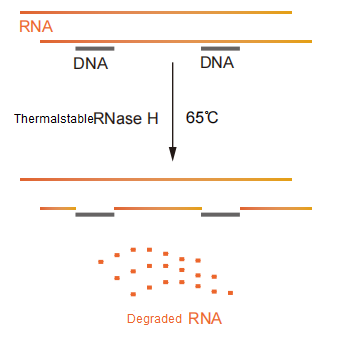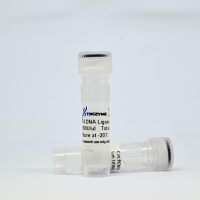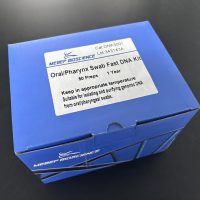RNA enzyme is a ribonuclease that hydrolyzes RNA into small molecule nucleotides. Different RNases have different specificity, so the substrates and cleavage sites they act on are also different.
The following are the functions and application scenarios of various characteristic RNA enzymes.
RNase R is a Mg2+dependent 3 '→ 5' ribonucleic acid exonuclease that can digest almost all linear RNAs, but does not digest lasso or circular RNAs, or double stranded RNAs with 3 'protruding ends shorter than 7 nucleotides. Except for tRNAs, 5S RNA, and intron lassos, most cellular RNAs will be completely digested by RNase R.
Application:
CircRNA enrichment
Intron screening of cDNA libraries

Ribonuclease A (RNase A) is a ribonuclease that cleaves single stranded RNA at the 3 'end of a pyrimidine residue to form oligonucleotides with 3' - terminal pyrimidin-3 '- phosphate. By cleaving adjacent pyrimidine nucleotides through RNase A, pyrimidin-3 '- monophosphate is also released. RNA modified with pyrimidin-2 '- fluoro-dNMP, such as RNA formed by in vitro transcription using the T7 Transcription Kit kit, can completely resist the cleavage of RNase A.
Application:
It can be used to remove contaminated RNA from DNA products, such as genomic DNA/plasmid extraction.
RNase H refers to ribonuclease H, which is a ribonuclease that can specifically hydrolyze RNA in DNA RNA heterozygous chains. RNase H cannot hydrolyze phosphodiester bonds in single or double stranded DNA or RNA, meaning it cannot digest single or double stranded DNA or RNA.
Application:
Remove mRNA before cDNA second strand synthesis
Identification of DNA-RNA Hybrids
In the presence of Oligo (dT), the poly (A) tail of mRNA is removed

RNase I preferentially degrades single stranded RNA into a single nucleoside 3 'monophosphate by splitting each phosphate diester bond. In contrast, other ribonucleases only cleave after specific residues (for example, RNase A cleaves 3 'to pyrimidine residues), while RNase I has no base preference. In addition, RNase I has thermal instability and is easily inactivated after heating at 70 ° C for 15 minutes.
Application:
Removing RNA from DNA preparations
Analysis and quantification of RNA in ribonuclease protection assay (RPA)
Detection of single base mismatch in RNA: RNA and RNA: DNA hybrids





